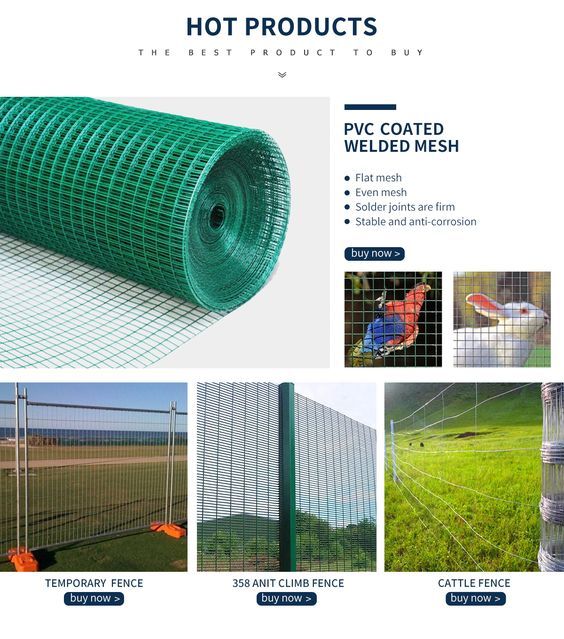Tips To Attach Mesh To A Fence DIY

Attaching mesh to a fence is a practical way to enhance security and privacy or to create a barrier for animals and pests. Whether you're dealing with a chain link fence, wooden fence, or any other type, there are several effective methods and tips to consider for a successful mesh attachment. This comprehensive guide will explore the best ways to attach mesh to a fence, offering suggestions to ensure durability, effectiveness, and aesthetic appeal.
1. Understanding the Type of Mesh and Fence
Mesh Type:
Different types of mesh, such as wire, plastic, or fabric, require specific attachment methods. Wire mesh is durable and suitable for security purposes, while plastic mesh is lightweight and often used for garden fencing. Fabric mesh is often used for privacy screens.
Fence Material:
The material of your fence (metal, wood, vinyl, etc.) dictates the tools and techniques you'll need. Metal fences may require wire ties or clips, while wood fences are more suited for staples or nails.
2. Preparing for Installation
Measure and Plan:
Measure your fence's length and height accurately. Plan how you'll roll out the mesh and the spacing of your attachment points to ensure even tension and a neat appearance.
Gather Tools and Materials:
Gather necessary tools such as wire cutters, staple guns, pliers, or drills, depending on your mesh and fence type. Also, have enough fasteners, like staples, ties, or screws.
3. Attachment Methods
Using Staples for Wooden Fences:
For wooden fences, a heavy-duty staple gun is effective. Ensure the staples are galvanized to prevent rusting. Staple along the mesh's top, middle, and bottom, spacing them every 6-12 inches.
Wire Ties for Chain Link Fences:
For chain-link fences, wire ties are ideal. Bend the relationship around the mesh and the wall regularly, twisting the ends with pliers to secure.
Screws and Washers for Durability:
In some cases, especially with heavier mesh types, using screws with washers can provide extra durability. This method works well on both wood and metal fences.
U-Nails for a Strong Hold:
U-nails, or fence staples, are great for attaching wire mesh to wooden fences. They offer a stronger hold than regular staples, especially in windy areas.
4. Ensuring Tension and Alignment
Keep It Taut:
While attaching the mesh, it's essential to keep it taut to prevent sagging. This may require two people: one to hold the mesh tight and the other to attach it.
Check Alignment:
Regularly step back and check the alignment of the mesh. An unevenly attached mesh can be unsightly and less effective.
5. Finishing Touches
Trimming Excess Mesh:
Once attached, trim any excess mesh for a clean look. Be careful to avoid leaving sharp edges.
Painting or Treating:
Consider painting metal mesh or treating wooden fences with a protective coat to improve aesthetics or increase durability.
6. Maintenance
Regular Inspections:
Periodically inspect the mesh for any damage or loosening, especially after severe weather.
Rust Prevention:
If you're using metal mesh or fasteners, check for rust. Apply rust-inhibiting paint or replace rusted parts as necessary.
7. Safety Considerations
Wear Protective Gear:
Always wear gloves and safety glasses to protect against sharp edges and flying debris.
Be Mindful of Surroundings:
Ensure your work does not damage underground utilities or infringe on neighboring properties.
Tips for fiberglass mesh fencing:
Fiberglass mesh fencing is a popular choice due to its durability, flexibility, and resistance to rust and corrosion. Here are some of the best tips for installing and maintaining fiberglass mesh fencing:
Choose the Right Grade:
Select the appropriate grade of fiberglass mesh based on your needs. Heavy-duty mesh is ideal for high-security areas, while lighter grades are suitable for residential properties.
Use Suitable Posts:
Choose solid and durable posts that can support the weight of the fiberglass mesh. Materials like steel, aluminum, or treated wood are recommended.
Proper Spacing of Posts:
Ensure posts are evenly spaced to provide adequate support and maintain the tension of the mesh.
Install Bottom Rails:
For added stability, install bottom rails to prevent sagging and keep the bottom edge of the mesh off the ground.
Attach Mesh Securely:
Use appropriate fasteners such as stainless steel staples, screws, or ties. Ensure the mesh is pulled taut during installation to avoid sagging.
Overlap Panels Correctly:
If your fence requires multiple mesh panels, overlap them by at least one inch to ensure no gaps and maintain strength.
Weatherproofing:
Although fiberglass is weather-resistant, applying a UV-resistant coating can protect the mesh from sun damage and fading.
Install Gates Carefully:
If your fence includes gates, ensure they are well-aligned, and the mesh is attached correctly to avoid gaps or sagging.
Consider Visibility:
Fiberglass mesh can be semi-transparent. If privacy is a concern, consider layering or using a type with tighter weaves.
Wrap up
Attaching mesh to a fence can significantly improve its functionality and appearance. You can ensure a successful and durable installation by choosing the suitable materials, tools, and methods for your specific situation and following these tips. Remember, doing it right will save you time and resources in the long run, providing a secure and attractive boundary for your property.
